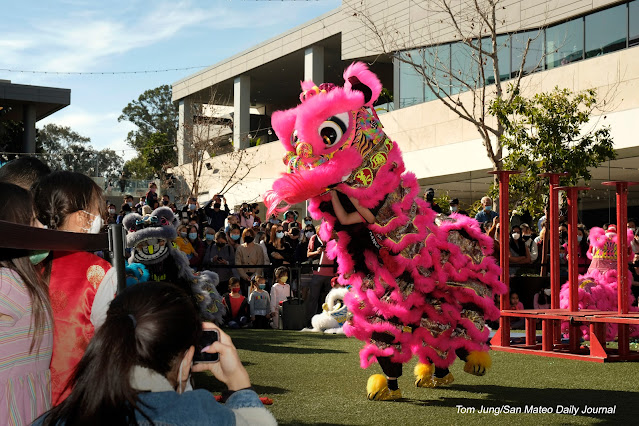Sunrise comes earlier as we distance ourselves from the Winter Solstice. For me, February 12 was a good day for light and shadow photos. While others might call the cityscape "cluttered", the structures often create novel shafts of light. Here, a narrow shaft of light landed on some smart meters on the side of a four-unit apartment building.
This photo isn't as mysterious as you might think. The morning light passed through the breezeway of the apartments behind me and created this rectangular shaft of light. It's a view you could only see at sunrise.
Again, buildings funneled the light onto this caution sign, in this case from camera right.
Burnett Avenue is a street that was literally "carved out" of the North Face of Twin Peaks. Looking up the hill is almost like standing at the base of an urban cliff.
The Twin Peaks area was once heavily wooded, and homeowners will often go to great lengths to accommodate their elderly neighbors. Had I been carrying a lens longer than my favored 17mm TTartisans wide angle, I might have been able to completely crop out the house at camera left, giving the photo the illusion of a vast, untouched forest.
This photo begs the question, "What happened to #306?" Nothing untoward, I hope.
Here is a colorful example of Urban Flotsam. Some white balance adjustments and some increased contrast made this make "pop".
More Urban Flotsam. Mardi Gras beads?



















